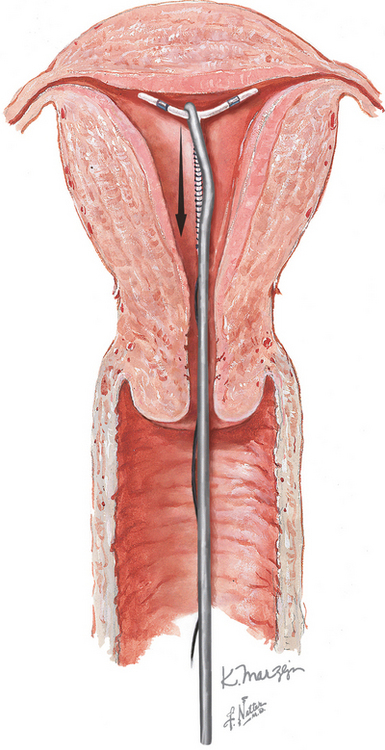Chapter 247 Intrauterine Contraceptive Device Removal
CONTRAINDICATIONS
Unstable or uncooperative patient or those in whom the presence of an IUCD cannot be confirmed.
REQUIRED EQUIPMENT
Bounds W, Hutt S, Kubba A, et al. Randomised comparative study in 217 women of three disposable plastic IUCD thread retrievers. Br J Obstet Gynaecol. 1992;99:915.
Andersson K, Batar I, Rybo G. Return to fertility after removal of a levonorgestrel-releasing intrauterine device and Nova-T. Contraception. 1992;46:575.
Hov GG, Skjeldestad FE, Hilstad T. Use of IUD and subsequent fertility—Follow-up after participation in a randomized clinical trial. Contraception. 2007;75:88. Epub 2006 Nov 14
Hubacher D, Lara-Ricalde R, Taylor DJ, et al. Use of copper intrauterine devices and the risk of tubal infertility among nulligravid women. N Engl J Med. 2001;345:561.
Ranzini AC, Wapner RJ, Davis GH. Ultrasonographically guided intrauterine contraceptive device removal before chorionic villus sampling. Am J Obstet Gynecol. 1995;173:603.
Skjeldestad FE, Bratt H. Return of fertility after use of IUDs (Nova-T, MLCu250 and MLCu375). Adv Contracept. 1987;3:139.
Stanback J, Grimes D. Can intrauterine device removals for bleeding or pain be predicted at a one-month follow-up visit? A multivariate analysis. Contraception. 1998;58:357.
Zhang J. Factors associated with copper T IUD removal for bleeding/pain: a multivariate analysis. Contraception. 1993;48:13.
American College of Obstetricians and Gynecologists. Intrauterine device. ACOG Practice Bulletin 59. Obstet Gynecol. 2005;105:223.
Assaf A, Gohar M, Saad S, et al. Removal of intrauterine devices with missing tails during early pregnancy. Contraception. 1992;45:541.
Ben-Rafael Z, Bider D. A new procedure for removal of a “lost” intrauterine device. Obstet Gynecol. 1996;87:785.
Grimes DA. Intrauterine device and upper-genital-tract infection. Lancet. 2000;356:1013.
Johnson BA. Insertion and removal of intrauterine devices. Am Fam Physician. 2005;71:95.
Mishell DRJr. Family planning. In: Katz VL, Lentz GM, Lobo RA, Gershenson DM, editors. Comprehensive Gynecology. 5th ed. Philadelphia: Mosby/Elsevier; 2007:306.
Sachs BP, Gregory K, McArdle C, Pinshaw A. Removal of retained intrauterine contraceptive devices in pregnancy. Am J Perinatol. 1992;9:139.
World Health Organization. Mechanism of action, safety and efficacy of intrauterine devices. Geneva: WHO, 1997.
Wyatt S, Gallen IW, Nicholls A. A potential hazard of prolonged insertion of an intrauterine device. N Engl J Med. 1994;330:1395.








